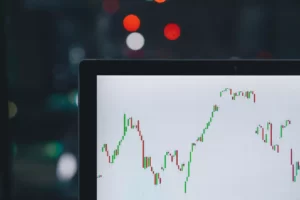Short term trading can be both profitable and risky. A short term trade can last from a few minutes to several days. To be successful in this strategy as a trader, you must understand the risks and rewards of each trade. You must not only know how to spot good short term opportunities, but also how to protect yourself.
Successful short term trading requires understanding and mastering several basic concepts. Understanding the fundamentals can mean the difference between a loss and a profitable trade. In this article, we’ll look at how to find good short term trades and how to make money from them.
In a Nutshell
- Successful short term traders comprehend risk and return.
- Technical analysis, market cycles, and moving averages can identify good short term trading.
- Short term trading involves sell or purchase stops to limit negative risk.
- Technical analysis uses past prices and trends to predict market moves.
- RSI, Stochastic Oscillator, and stock chart patterns including head and shoulders, support and resistance, and trend lines are popular technical analysis tools.
Recognizing Potential Candidates
Recognizing the “right” trade will mean you know the difference between a good potential situation and one to avoid. Too often, investors get caught up in the moment and believe that if they watch the evening news and read the financial pages, they will be aware of what is happening in the markets. The truth is that by the time we learn, the markets have already reacted. So there are basic steps to follow to find the right trades at the right times.
Mastering Short Term Operations
Step 1: Observe Moving Averages
A moving average is the average price of a stock over a given period of time. The most common time frames are 15, 20, 30, 30, 50, 100 and 200 days. The general idea is to show whether a stock is trending up or down. Generally, a good candidate will have an upward sloping moving average. If you are looking for a good stock to short, you will generally want to find one with a flattening or declining moving average.
Step 2: Understanding the General Cycles or Patterns
Generally, markets operate in cycles, so it is important to watch the calendar at specific times. From 1950 to 2021, most of the S&P 500’s gains have occurred in the November through April period, while during the May through October period, the averages have remained relatively static. As a trader, cycles can be used to your advantage to determine the right times to enter long or short positions.
Step 3: Know the Market Trends
If the trend is negative, you might consider going short and buying very little. If the trend is positive, you may consider buying with very few short positions. When the general market trend is opposite, the chances of success decrease.By following these basic steps you will know how and when to spot the right potential transactions.
Risk Control
Controlling risk is one of the most important aspects of successful trading. Short term trading involves risk, so it is essential to minimize risk and maximize profits. This requires the use of sell stops or buy stops to protect against market pullbacks.
A “sell stop” is an order to sell a stock once it reaches a predetermined price. Once this price is reached, it becomes a sell order at the market price. A “buy stop” is the opposite. It is used in a short position when the stock rises to a certain price, at which point it becomes a buy order.
The goal of a successful trader is to make the best trades. Money is secondary.
Alexander Elder
Both are designed to limit the downside. As a general rule, in short term trading, it is desirable to place the sell stop or buy stop between 10% and 15% of the point at which the stock was purchased or the short trade was initiated. The idea is that the losses should be manageable, so that the gains are considerably greater than the unavoidable losses.
Technical Analysis
There’s an old saying on Wall Street, “Never fight the tape.” Whether most will admit it or not, the markets are always looking ahead and pricing in what is happening. This means that everything we know about earnings, company management, and other factors is already discounted in the stock. To get ahead of everyone else, you have to use technical analysis.
Technical analysis is a process of evaluating and studying securities or markets using past prices and patterns to predict what will happen in the future. In short term trading, it is an important tool to help you understand how to profit while others are unsure. Below, we will unveil some of the various tools and techniques of technical analysis.

Buy and Sell Indicators
Several indicators are used to determine the right time to buy and sell. Two of the most popular are the relative strength index (RSI) and the stochastic oscillator.
The RSI compares the relative strength or weakness of a security to other securities in the market. Generally, a reading of 70 indicates a bullish pattern, while a reading below 30 indicates that the stock is oversold. It is important to keep in mind, though, that prices can stay at overbought or oversold levels for a long time.
The stochastic oscillator is used to decide whether a stock is expensive or cheap based on the closing price range of the stock over a period of time. A reading of 80 indicates that the stock is overbought (expensive), while a reading of 20 indicates that the stock is oversold (cheap).
RSI and stochastic can be used as stock picking tools, but you should use them in conjunction with other tools to spot the best opportunities.
Patterns
Another tool that can help you find good short term trading opportunities is stock chart patterns. Patterns can develop over several days, months or years. Although no two patterns are alike, they can be used to predict price movements.Some important guidelines to keep in mind are:
- Head and shoulders: The head and shoulders, considered one of the most reliable patterns, is a reversal pattern often seen when a stock is topping out.
- Triangles: A triangle forms when the range between the highs and lows of a stock narrows. This pattern often occurs when prices are bottoming or topping out. As prices narrow, this means that the stock could break up or down violently.
- Double Top: A double top occurs when prices rise to a certain point on large volumes, pull back, and then retest that point on reduced volumes. This pattern indicates that the stock may be going down.
- Double Bottom: A double bottom is the opposite of a double top. Prices fall to a certain point on heavy volume and then rise before falling back to the original level on lower volume. Unable to break the low, this pattern indicates that the stock may be headed higher.
Wrap Up | Short Term Trading
Short term trading is risky but can also be profitable. Successful traders know the risks and benefits of every trade and can find good opportunities in the short term while protecting themselves. To be successful at short term trading, you need to be able to spot candidates, learn how to trade, minimize risk, and use technical analysis. Watching moving averages, understanding market cycles and trends, employing sell stops and buy stops, stock chart patterns, and prominent indicators like the RSI and stochastic oscillator can help traders find good chances. Use these tools and strategies together to optimize revenues and reduce risks.
FAQs

Short term trading entails keeping securities for minutes to days.
Short term trading is risky but profitable. Before investing, know the risks and advantages.
Use moving averages, cycles, and market trends to find profitable short term bets.
A moving average shows a stock’s trend by averaging its price over time (up, down or flat).
Short term trading is risky, thus risk management is essential. Sell stops and purchase stops reduce risk during market pullbacks.
A sell stop is an order to sell a stock at a given price, and a buy stop limits the drop of a short position when the stock rises to a certain price.
Technical analysis analyzes stocks and markets using past prices and patterns to predict future developments. Short term traders need it.
Buy and sell indicators help investors decide when to buy or sell stocks. RSI and Stochastic Oscillator are examples.
Stock chart patterns can help you uncover short term trading opportunities by evaluating price movements and anticipating future trends based on historical patterns.
Article sources
At Capital Maniacs, we are committed to providing accurate and reliable information on a wide range of financial topics. In order to achieve this, we rely on the use of primary sources and corroborated secondary sources to support the content of our articles.
Primary sources, such as financial statements and government reports, provide firsthand evidence of financial events and trends. By using primary sources, we are able to directly reference information provided by the organizations and individuals involved in these events.
Secondary sources, such as financial analysis and commentary, interpret and analyze primary sources. While these sources can be useful for providing context and background information, it is important to use corroborated sources in order to ensure the accuracy and reliability of the information we present.
We take pride in properly citing all of our sources, both primary and secondary, in order to give credit to the original authors and to allow our readers to verify the information for themselves. We appreciate your trust in our website and are committed to upholding the highest standards of financial journalism.
- CMC – Short-term trading
- IG – Short-term trading strategies for beginners
- LPL Financial – Time to Sell in May?





















